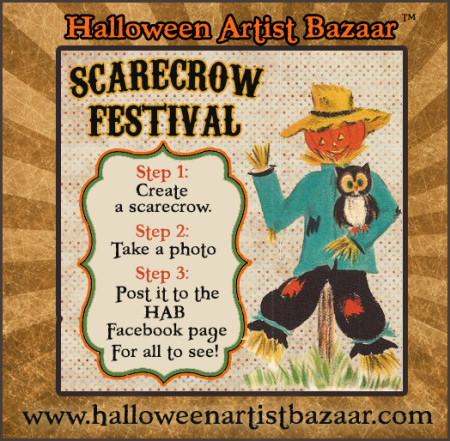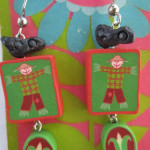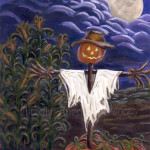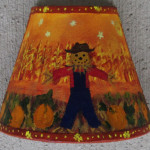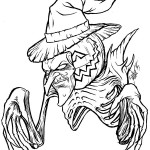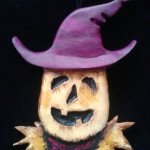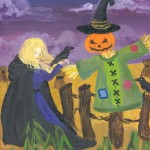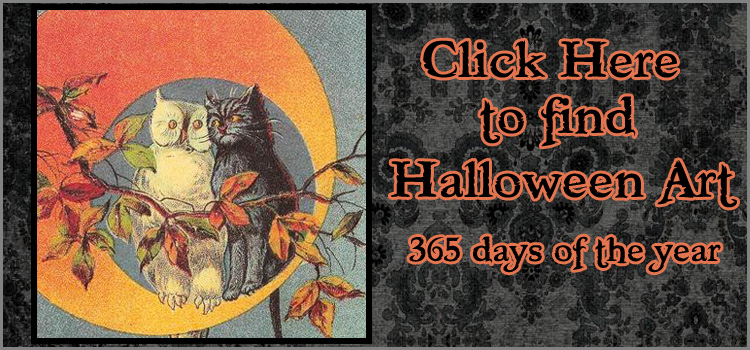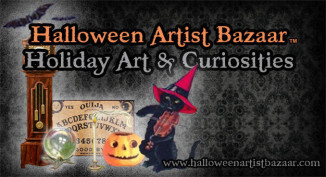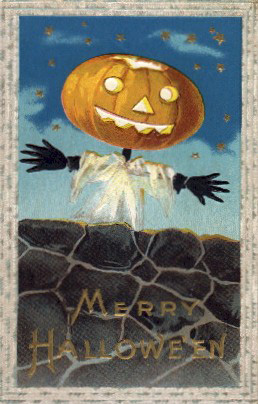
The Scarecrow
-By Angelique Duncan
The Scarecrow
One of the quintessential symbols of fall is the scarecrow. The simple humanoid made from straw and newspaper who wears old clothes and often a hat. His job is to guard the pumpkin patch or the cornfield and in urban environments he watches over the flowerbeds and potted plants. He is usually comical, sometimes jovial and often childlike in appearance. However the scarecrow was not always such a friendly figure. He once partook in great rituals and was a fearsome guardian who channeled the spirits of the seasons and was believed to kill those who threatened his crops or village.
Some of the earliest scarecrows appear in Greece and were carved from wood to represent the son of Aphrodite, Priapus who was noted as the protector of orchids and gardens. This practice was present in Roman culture as well. Scarecrows were also recorded as being present to scare away flocks of birds from the river Nile. In Thailand scarecrows were for used for protection of the home. They were set out to scare away ghost and unwanted sprits who would come to collect souls.
In Japan scarecrows were made from wooden stakes draped with rags and bells. These scarecrows were more abstract in their appearance than humanoid. Raw meat would be hung from the stakes giving them a rotten stench. They were as much to scare away trespassers and thieves, as they were to fend off birds. Later the Japanese scarecrows began to take on a more human look, wearing old raincoats, wide brim hats and boots. These guardians were given swords to make their appearance more intimidating. They were known as the Kuebiko, and were a representation of the Shinto deity of agriculture, who was a man who could not walk on his own but had vast knowledge and awareness of all things in the world.
The Vikings believed that scarecrows channeled nature spirits who would ward off evil that could otherwise spread disease, destroy crops and kill livestock or threaten the villages. However, it was also believed that the scarecrow could at times become possessed and grow too powerful and zealous in its protection, killing any animal or human it deemed as a threat. Ceremonies where held giving the scarecrows offerings of clothes and food and drink. There are legends that human sacrifices were given to appease the nature spirits at planting. It is said that the deceased sacrifice would be hung in the fields after a ritual in honor of the scarecrow and the nature spirits that dwelled in him. Although some believe that these bodies were actually that of thieves that were impaled and left as a warning to others not to trespass.
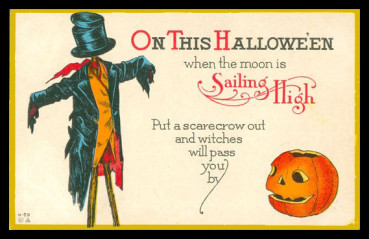
Some Europeans believed that former protectors who had passed away occupied scarecrow bodies. It was thought that the soul of farmers, law officers, or even loyal canines could be summoned to inhabit the scarecrow to protect the land. Others believed they were harvest Gods who were brought to life by hosting a ceremony at the scarecrows birth in the Spring. By showing the scarecrow respect once they were erected, the Gods would protect in return. The scarecrow might be moved to watch over different fields and shared by townsfolk. At the end of the harvest on or near October 31st the scarecrow would be paraded through town for a grand celebration thanking him for his service and burned in a bon fire to free his spirit until the next planting season.
In Germany early scarecrows were made from wood and carved to resemble witches that were set out in the early spring. It was believed that the wooden witches would draw any evil from the ground that may have entered the earth during the Winter months. The witches would stay in the field until harvest, at that time they were burned. Some German farmers would build humanoid scarecrows from old clothes and often depicted with red scarves that were considered the embodiment of bootzmon, the boogeyman of the fields. These boogeymen would move through the field frightening away trespassers.
In Scotland scarecrows were sometimes believed to house the spirit of the Tattie Bogle. Tattie Bogle was known as a potato monster who would hide in the potato fields and could cause potato blight and terrorize and assault humans.
Both the Dutch and the Germans would create a female companion for their scarecrows. She would be adorned in a long dress and often have a bonnet. At times the female would be posted at the opposite end of the field than her male counter part. At other times she might be moved to stand with him. It was believed that they would at times move together around the fields at night.
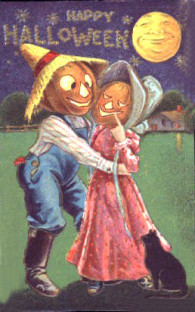
Scarecrows made their way to North America in the 1800’s traveling with the farming practices of immigrants. As America became a melting pot of traditions, scarecrow customs were melted together as well. And with theses scarecrow practices, the mythologies followed too. There are countless folklores of scarecrows having the ability to move around the fields they guard on their own. It was widely believed that on a full moon scarecrows could capture disembodied spirits and take on an animated life and move freely.
Some myths suggest that scarecrows have the ability to multiply. During a full moon; especially a full moon on Halloween, scarecrows would converge together and move as packs through entire villages making mischief, reaping destruction and scaring humans they felt were not respectful.
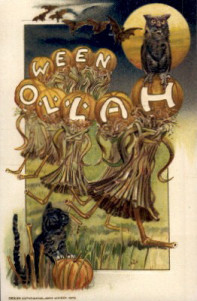
During the age of small farms and agriculture in the United States scarecrows were a common site through out the growing months of the Spring and Summer. They were eclectic in their appearance and often a spooky sight to see. However with modern farming technology, the scarecrows job has been replaced by mechanized means. Once mediums for spirits and Gods, they now they are relegated to a novelty set out during the fall as Halloween and Autumn decorations. As the old time religions and practices were abandoned, Scarecrow became more of a temporary art object and less of a protector; their appearance shifted to a kindler, gentler form.
Scarecrows are still celebrated today in scarecrow festivals. Usually large events held in rural and some urban communities in which residents are invited to construct scarecrows to put on public display, often with prizes awarded for different categories. Sometimes the displays are held in a central location, other festivals become community wide events where the public can tour the town spotting scarecrows.
Should you put out a scarecrow in your garden whether for protecting your plants during the growing season or as a decoration for fall, remember to treat him with respect. Give him an offering of dried food or his very own special flowerpot. Make sure he is shaded when it is sunny and offer him water when it is dry. When there are storms offer him shelter. Keep him company every now and then so he doesn’t get too lonely and knows he is appreciated.
If he is to be used for the following year, bring him in after midnight on October 31st so that he doesn’t hold over any evil spirits that might be released next season and thank him gratefully for his service of guardian. Keep him stored in a safe place. Other wise he might become unhappy and decide to wander off on his own and join a group of disgruntled scarecrows making their way down your street.
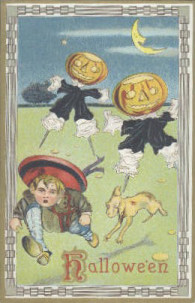
Angelique Duncan is proprietor of Twilight Faerie Nostalgic and Capricious Objects. Check out her artist page to find links to her shops and vintage inspired traditional holiday art. Visit again next month for more traditions and folklore.
